We’ve adjusted our tools - Learn more
- Learn
-
Articles
Read about influencer marketing
-
Growthnotes - Newsletter
Insights for the modern marketer
Influencer marketing is still discovering itself, and best practices are yet to be found.
The industry has garnered a bad rep for multiple reasons, many of which you probably know; outsized egos, spam, and FTC intervention.
Of course, influencers with deep entitlement make the news, giving influencer marketing that bitter taste we might associate with it.
You most likely read an article of a journalist or an agency creating a fake profile on Instagram, only to receive messages from brands and agencies (managing their client’s money) who want to collaborate for outrageous sums of money (here, or here if you want to go down the rabbit hole).
This is the tip of the iceberg.
A lot of influencers use the same tactics.
However, their purpose is not to write a clickbaiting media piece by exposing the hidden side of the industry, but rather to be paid by brands to collaborate (arguably fraud, I would agree).
A study by Ghost Data shows that 9,5% of the profiles on Instagram are fake accounts (95 million and counting as of 2018)
It’s a problem.
Fortunately, problems have solutions.
This cheatsheet results from internal data and know-how, which we have sharpened through thousands of collaborations.
We learned some of these insights the hard way.
Yes, we have paid for spam in the past - a mistake we avoid repeating.
Let’s look at what you can check to avoid falling for these traps.
1. Unnatural Follower/Following Growth:
2. Disproportionate Likes to Followers Ratio:
3. Fake Comments:
4. Collaboration Overload:
5. Lack of Creative Direction:
Remember to vet influencers thoroughly before collaborating, ensuring a genuine fit and authentic reach.
Unnatural follower and/or following growth typically come in two flavors: automation and purchased followers (bot farms).
There are many automation tools which are built on the promise of more followers.
Here is how these software automate your account’s behavior:
Bait n’ switch at its best.
Luckily, you can flag profiles using these behaviors by looking at their follow/unfollow curve.
To do so, head over to Social Blade, and enter a profile you want to analyze.
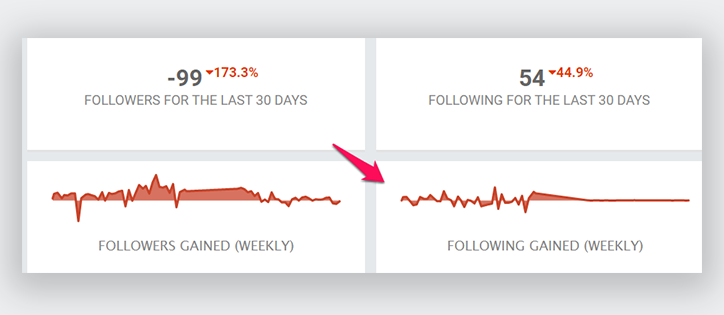
The oscillation in the graph displays this behavior.
We can also observe that the influencer has stopped the said behavior, which probably signals that Instagram has banned his account for a few days as a warning.
A lot of websites specialize in buying real followers for cheap.
Here is what those followers might look like:
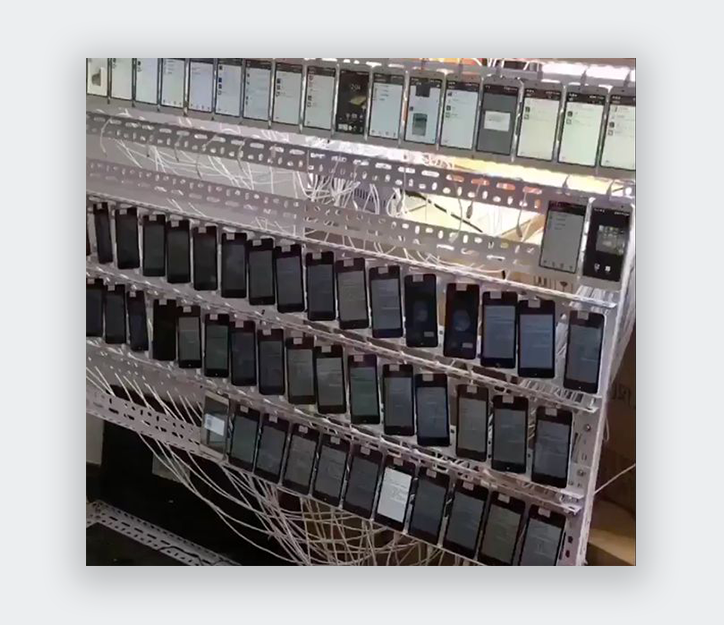
Crazy, isn’t it? This bot farm counts over 10,000 phones.
Again, you can use Social Blade to detect purchased followers.You will typically see a spike like this one:
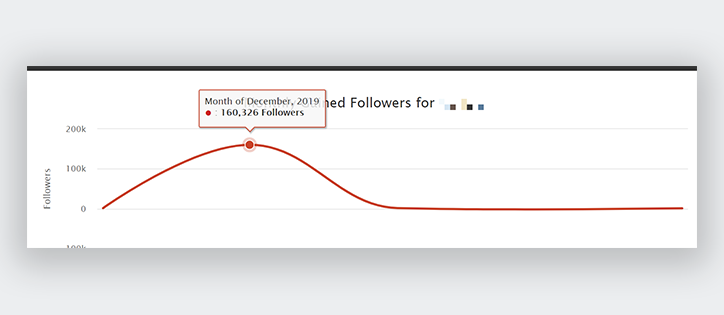
This influencer has gained 160,326 followers in December 2019, which is a red flag.
Be careful.
The peak could be the result of an externality such as the person appearing on television, which is something you should investigate.
Some Instagram profiles participate in engagement pods (or groups) to boost their likes and comments per post.
An engagement pod is a group in which everyone will interact with each other’s content.
This creates an unnatural boost in engagement.
Here is how engagement rate is calculated: likes + comments / followers.
You can try around our Instagram Engagement Calculator for free to see if a profile has a good engagement rate.
If a profile has an engagement rate above 15%, I advise you double check their authenticity.
A high engagement is not necessarily a sign of spam, but it is definitely a warning. Take it into consideration.
Before working with an influencer, ask them to share with you a screenshot of their audience insights:
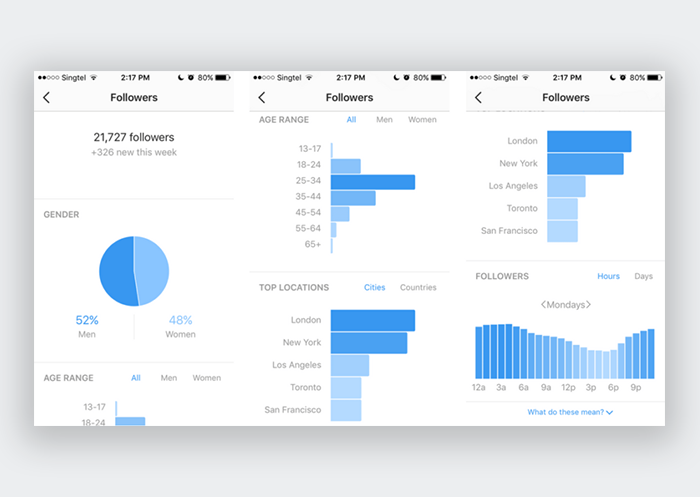
Source: falcon.io
Fraudulent profiles will have an uneven location distribution in their audience insights (i.e. 80% of profiles in India or Russia).
Engagement groups also allow for cross-commenting.
The mechanic is simple: I comment on your pictures, you comment on mine.
The easiest way to recognize a fake comment distribution is to look at the follower count of the commenters.
Why?
Here is the logic: people who participate in engagement groups have a desire for follower growth, which means that they will have more followers count than your average Instagram user.
If every comment on a post is done by someone with over 2000 followers, that is a significant red flag.
Influencers in these groups typically ask other members to comment on sponsored content to deliver a better engagement, and make the collaborator (the brand or the agency) happy.
The reason is that sponsored posts typically get less engagement than non-promotional content, and this fixes the problem.
It is straight up fraud.
As the industry matures, this is probably something that we will prosecute through courts of law.
For now though, we just live with it.
Although this is not Instagram fraud per se, it is definitely something to vet for.
Let me explain.
Some influencers are collaborating with brands every other post.
The audience of these influencers is burnt out, meaning they lose trust in the influencer.
It’s the sellout effect; you don’t trust people who are always selling you something.
For instance, this mother has 4 paid partnerships with 3 different brands (Goli, Suzy J, and Little Tikes) in her last 6 posts.
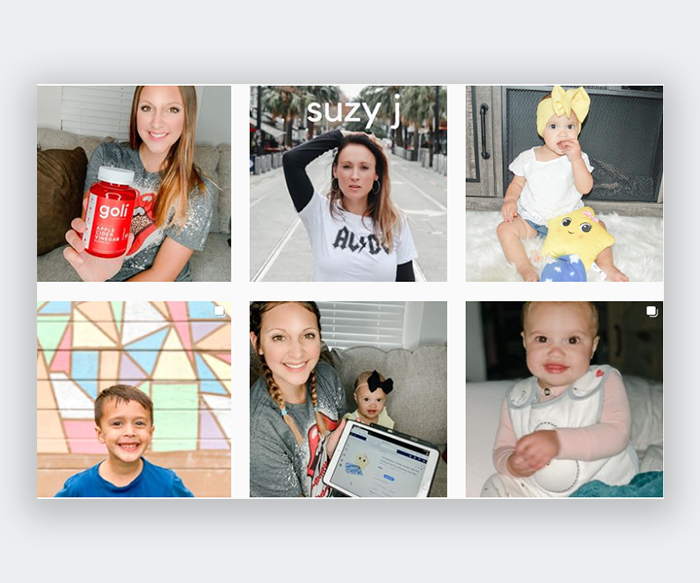
If you’re following her profile, you would quickly come to the conclusion that she is always promoting content, which makes her less trustworthy.
This isn’t spam related either, but keeping an eye for this will affect your results across the board.
How?
Some influencers don’t have a relevant creative direction for your product.
Here is an example:
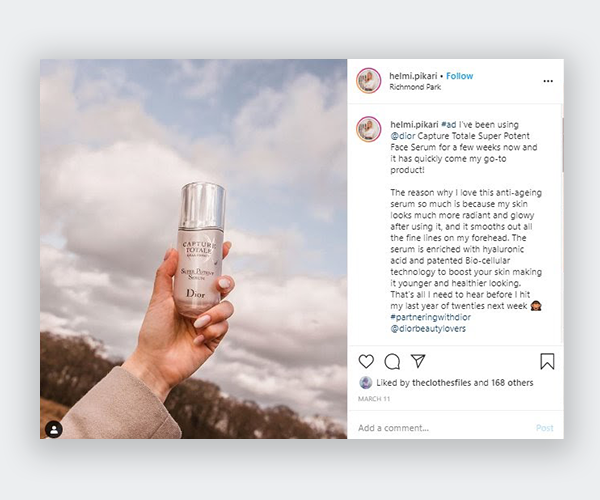
The reason why I love this anti-ageing serum is because my skin looks much more radiant and glowy after using it.
This is impersonal, and lacks what we seek from an influencer: personality.
Dior might be behind this pre-chewed post write-up, but this kind of writing is pale, and carries no weight for your brand.
Stay away from poor creativity.